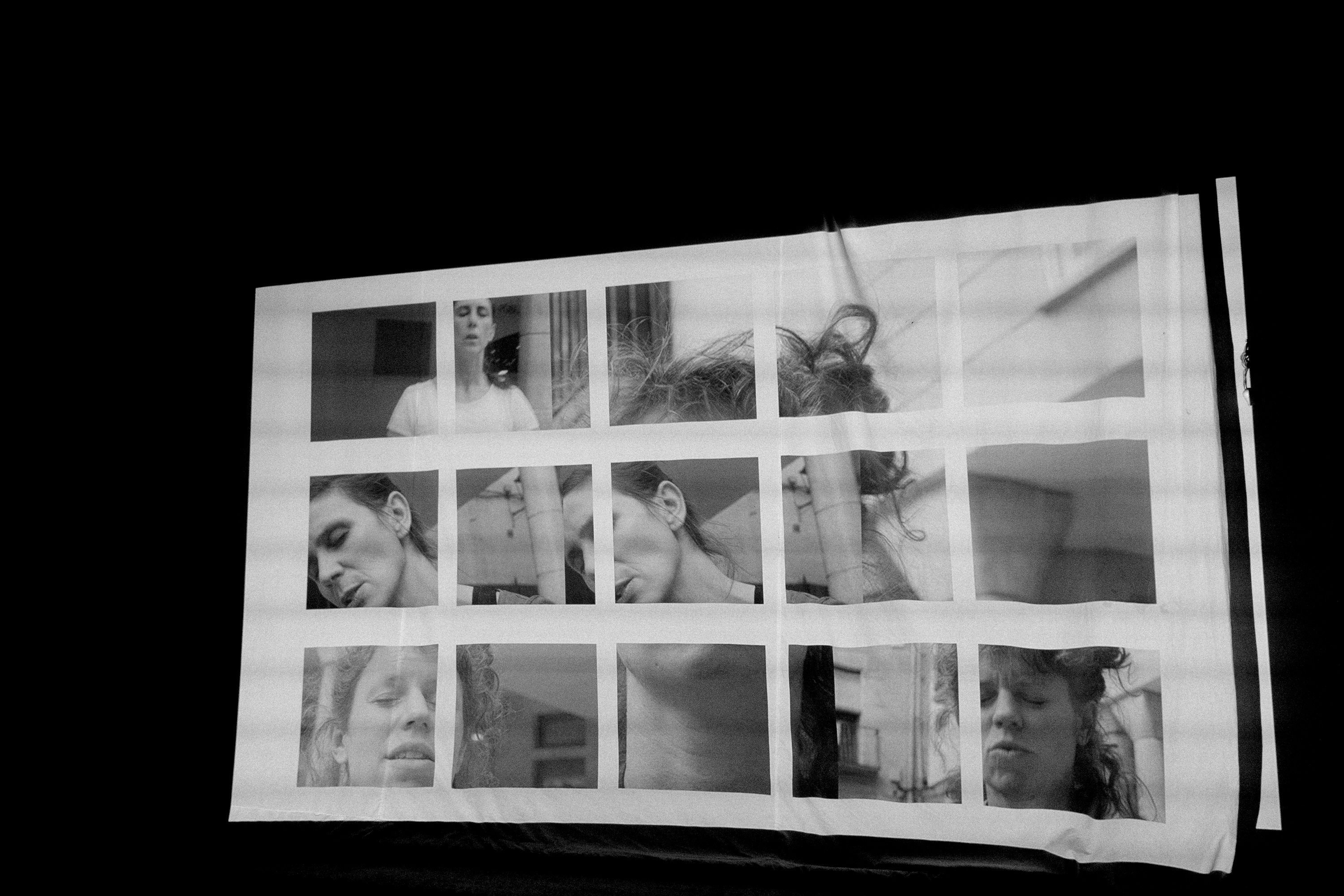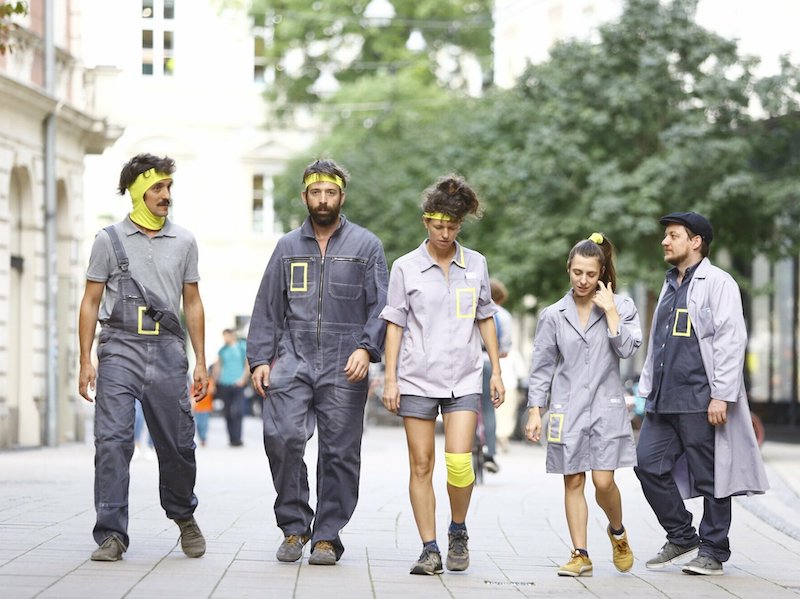 artists
artists
Inside Sauf le Dimanche and Eléctrico 28 Exploratory Residency
Watch and read about a longer, deeper type of residency
04/01/2023
In the fall of 2022, the artists Eléctrico 28 and Sauf le Dimanche gathered in Tàrrega, Spain for an exploratory residency hosted by IN SITU's Partner FiraTàrrega. Responding to the associate artists' need to work more process-based, to focus on research and exchange, their research laboratory is a telling example of a growing trend within the network.
It is one of these stories of collaboration that makes the IN SITU network: based on cooperation, the residencies of associated artists with new European partners are central to the functioning of IN SITU.
In this spirit, it is natural that a new residency format has emerged within the network, through exchanges and meetings between artists.
This first exploratory residency gave rise to a film, produced by Jonay P Matos, telling the story of a smooth collaboration.
Did you know each other before IN SITU?
Alina, from Eléctrico 28: Yes, I did know Marie from a conversation we had online regarding a Trans-European Project Sauf Le Dimanche were creating with some Catalan artists and groups. It was about collecting and registering, in their case, gestures, with their bodies, and, in our project, daily life in a broader sense, with written words, on the streets. On that occasion, we finally did not work together, but the interest was wide awake.
Clàudia, from Eléctrico 28: I didn’t know Marie ad Emilie from Sauf le Dimanche; it was through IN SITU that I heard about them. With Jonay, I knew about him and his work, but this time was the first one working together.
Marie & Emilie, from Sauf le Dimanche: Yes and no! We had a chance to have a first artistic talk, because Emilie and I contacted them for an euroregional project. We had never seen Electrico28’s work, but it took us about 30 seconds to feel we had a lot in common. And then, during the very first IN SITU online meeting we decided we should artistically meet.
When and how did the idea to work together emerged?
Alina, from Eléctrico 28: We pretty soon felt that our work had a lot in common. We started talking during the IN SITU week that was all online because of covid and then were very happy to finally physically meet in Tàrrega in autumn 2021. Soon later we came up with the idea to exchange tools and ways of seeing and the idea of the EXCHANGE LAB started to take form.. Marie & Emilie, from Sauf le Dimanche: The idea emerged very fast. One of the thing we shared, and that is, to me, the ground of it all, is that we understood that the network was an opportunity to imagine things differently than from a production or touring perspective. So, we thought about something that never has space, time and money: artistical exchange labs. No other goal than put our tools on the table and share them and shake them with other artists, and share our visions of public space. Jonay P Matos: Approximately a month before this experience, Alina from Eléctrico28 told me that they were going to hold this meeting between Sauf le Dimanche in Tàrrega. We talked a lot about the subject and in this conversation the idea of proposing to the Fira Tàrrega that I document this process came up. | 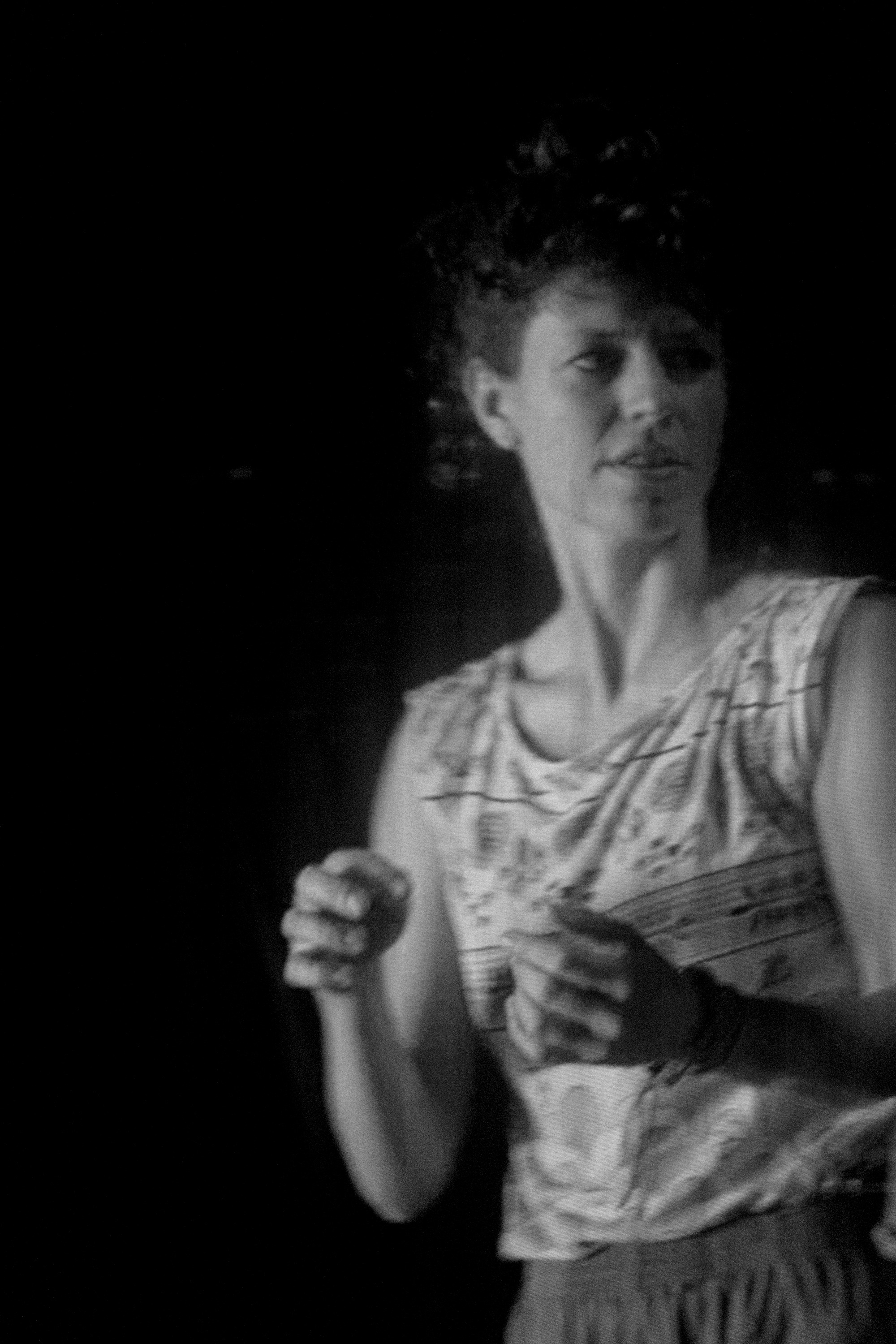 |
"We understood that the network was an opportunity to imagine things differently than from a production or touring perspective. So, we thought about something that never has space, time and money: artistical exchange labs. No other goal than put our tools on the table and share them and shake them with other artists, and share our visions of public space" |  |
Watch Sauf le Dimanche |
How was it planned with FiraTàrrega?
 |
Both partners were extremely open and interested in supporting such an idea within the network of IN SITU. The first part, with Fira Tàrrega in Tàrrega, was, for us artists, a luxury because Fira is very much used to hosting residencies, although this one was different because there was no “performance” to be shared at the end but rather little interventions happening all the time throughout the city, which is really an amazing place to try out things because people are so used to artists working in the public places of Tàrrega. Fira Tàrrega were also the ones to take care of organising the administrative part and coordination of the exchange lab in conversation with me as the representative of Eléctrico 28. Marie & Emilie, from Sauf le Dimanche: When we agreed on what we wanted to do together, we simply ask to our two partners a meeting: so we had an online meeting with Ana, Christophe and Loïs, and explained them. They said “yes”. More than that, Ana, who had never seen our work, said this wonderful thing: that’s what the network is made for! Try out, and give opportunities. As simple as that!! |
"there was no “performance” to be shared at the end but rather little interventions happening all the time throughout the city, which is really an amazing place to try out things because people are so used to artists working in the public places of Tàrrega." |  |
How do your disciplines meet?
 | Alina, from Eléctrico 28: We are both interested in the little things, people’s daily life actions. In performative acts that do not stop that life but mingle with it. We care about the relationships with those who do not come to see a performance but occasionally share the same public place with us. We care about contributing to the creation of a comfortable place, where we can act and interact in a less functional and more resonant way. I know Jonay for a very long time already and I always wanted to work with him. He is an incredibly free artist who always experiments with all kinds of visual and fine arts but with a strong interest in live performance as well. I knew he had accompanied creation processes of all kinds and since he was in Barcelona at that time, it seemed like the perfect occasion to finally do something together. I think Jonay, as a photographer and video artist and Eléctrico share a strong interest in the concept of framing, but then, who does not…. Clàudia, from Eléctrico 28: With Sauf le Dimanche, even if the kind of scenic works we usually develop are quite different, we have a lot of interests and tools in common. It was really a gift to receive specific proposals from sauf le dimanche, cause the interests were common but the way of approaching them brought some new air to our creating habits. With Jonay, it was surprising how the video and body languages could complement each other so much. Jonay was not an outside eye, but he really merged and experimented with us, not only registering in an objective way, but investigating with his tools. Marie & Emilie, from Sauf le Dimanche: It was so obvious! Alina and Claudia are dancers. They practice it, and they work with bodies, anyway. And Emilie and I are familiar with clown, and we are ok with using voice, words... We were all so much into the desire of experimenting. It was about disciplines, but even more about points of view. |
"More than that, Anna [Artistic director at FiraTàrrega], who had never seen our work, said this wonderful thing: that’s what the network is made for! Try out, and give opportunities" | 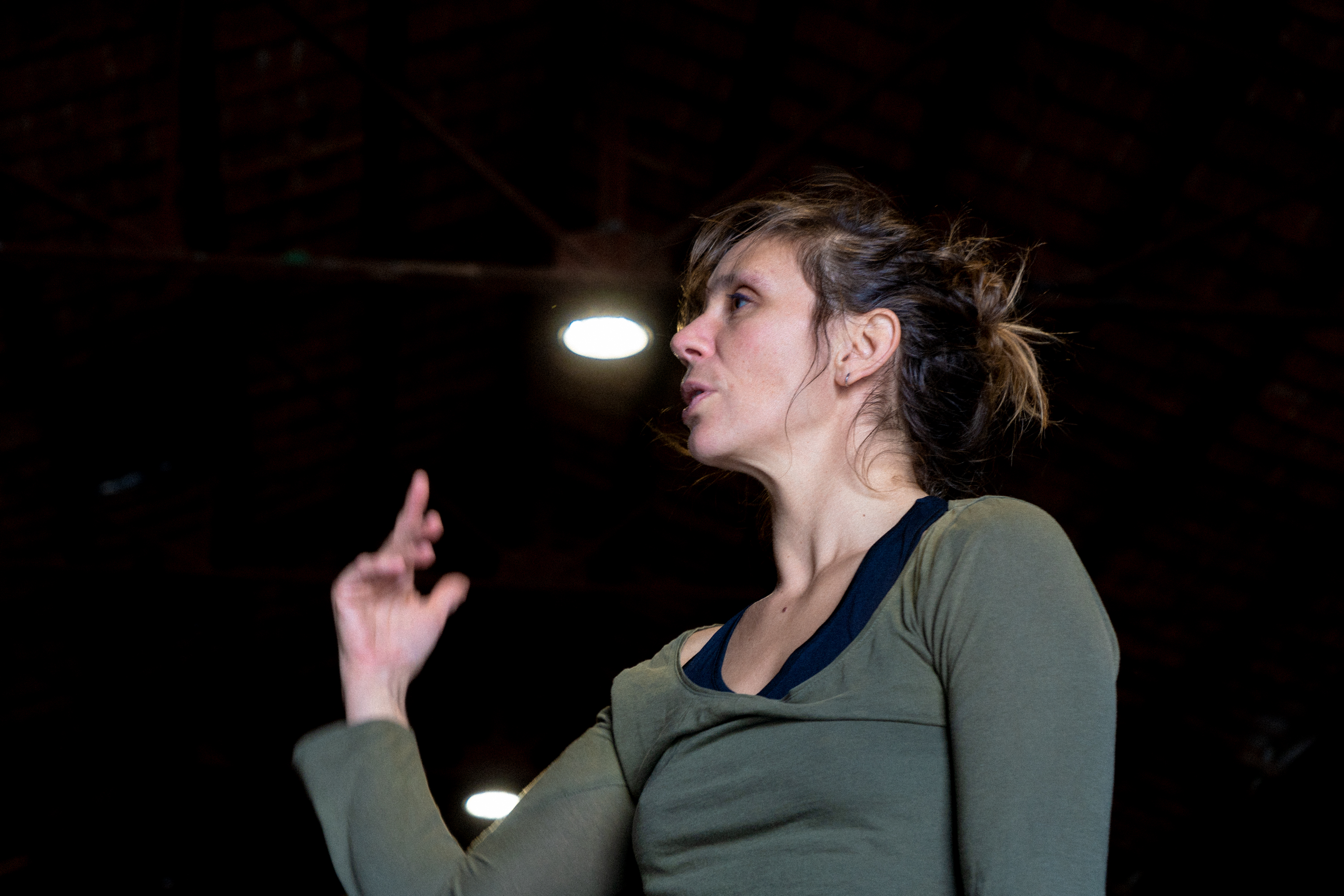 |
What about your respective practices of public space?
Alina, from Eléctrico 28: I think the nice thing about this lab was that we all took the chance to take risks regarding our practices, stepping outside of the known areas to try things we had never tried before. Of course, you always come back to things you know and some concepts get affirmed as you investigate into new directions. Clàudia, from Eléctrico 28: We have a lot in common: we work on the street, we have an interest of interaction with passerby’s and audience, we work from love, our scripts and choreographies are not hermetic but they are affected by what happens around, etc. It was also beautiful to see the differences between us, and to learn from each other Marie & Emilie, from Sauf le Dimanche: Those last years we created performances for daily life spaces. And except with Troc!, we were not so much exploring into public space. Electrico28, overall with The Frame, is so much immerged into public space. So that’s what it brought us back. 3 days intensely diving into public space. It’s been a while for us, and it was good to be there again. This lab, regarding our practices, allowed us to reconnect ourselves with precise problematics of public space. |  |
 | "So that’s what it brought us back to: 3 days intensely diving into public space. It’s been a while for us, and it was good to be there again. This lab, regarding our practices, allowed us to reconnect ourselves with precise problematics of public space." |
Was the language difference a barrier?
Alina, from Eléctrico 28: It was not a barrier, rather a tool to play with as well. I love languages and find it deeply enriching to understand how the notions of words and expressions differ between cultures and even individuals. I feel language as another feature to play with, to make it become part of creation. Clàudia, from Eléctrico 28: At some point we had to translate to each other, but I think that we could communicate quite fluidly; there was an intuitive connection which needed no language. Marie & Emilie, from Sauf le Dimanche: Not at all. It was very easy actually. And as the days went by, it became more and more our langage, with french and spanish and catalan and english all mixed up ! Jonay P Matos: From my position of documenting the process, I did not feel that the language difference was a problem. It is true that there were times when things were discussed and I sensed that they were talking about something specific but without really understanding that it was so. In short, I feel that the language in this experience has not been a problem when working. Between these 4 artists there was a very beautiful connection that was above language and I think that this has been reflected in the video. | 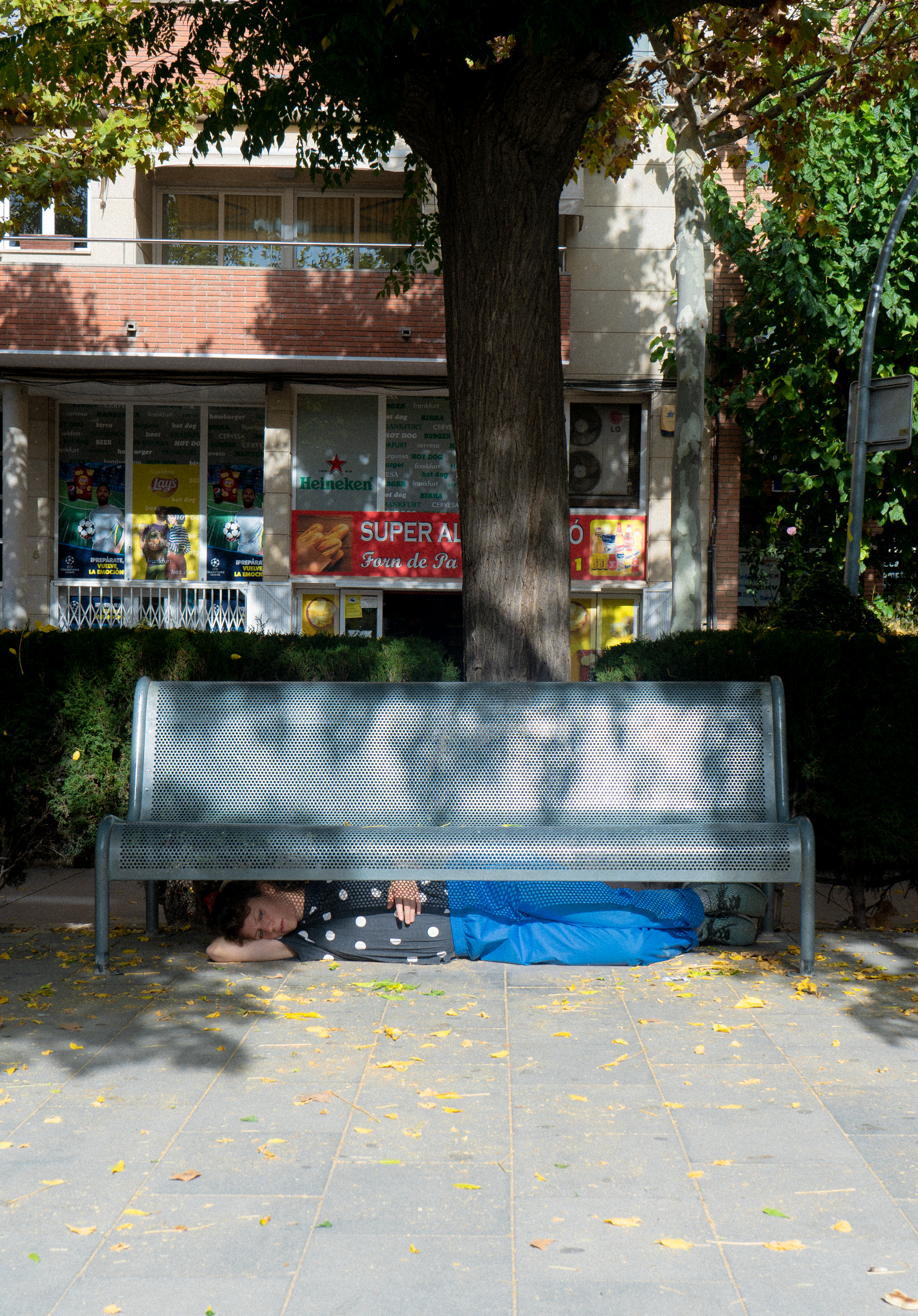 |
What will you keep from this experience? What did you learn?
 | Alina, from Eléctrico 28: The importance of spaces to take risk and to break with inertias. Clàudia, from Eléctrico 28: I reconnected with a way of working which focuses more on research and less on constructing. More on intuition and less on rational thinking. More on asking questions than on getting right answers. I will keep a lot of feelings that have no words to be described, and the gratitude of sharing, listening, doing without judgement but at the same time with commitment to the creative act. Marie & Emilie, from Sauf le Dimanche: We will keep the feeling of those kind of spaces as essential spaces. They are necessary and they give sens to the rest. It is so important to ear other words, to look things from others perspectives, to stay really and deeply open to exprience, try out, not knowing. The instution ask us so much about knowing what we do, the way we do, talk about what we do. We need so much spaces for doubting and looking for. That’s what it was. |
What are the next steps for you?
Clàudia, from Eléctrico 28: After this exchange, we agreed that we would like to keep on collaborating in some way. So maybe we would try to do another exchange in Evry. Besides the link with SLD, I will keep creating and investigation keeping the approach of taking risks and letting intuition and playfulness be present. Marie & Emilie, from Sauf le Dimanche: We wish we could do the second lab! Jonay P Matos: The next steps after Tárrega have been very fruitful, I had an exhibition in Mallorca and also on the same island an artist residency with two artists, Xavier Almeida and Julià Panadés. Thinking back now, it's curious that the work I did in the residency had to do with observation. Observe from another place that I am used to, which is through the camera. I also ask myself many questions about the fact of registering: for what, for whom, how to do it, etc. And the result obtained in the residency was wonderful and thinking about it, I am convinced that the experience with Eléctrico 28 and Saufle di Manche has influenced me. |  |
Meet Jonay P Matos, videographer
 | You are used to encompassing artists and artistic creation processes, what do you get out of this? Jonay P Matos: The first thing I keep from this experience is that I feel very fortunate to work with people with great human qualities, in addition to being incredible professionals with spectacular work capacity and creativity. My work is basically based on observing, but in this experience and later reviewing the recorded material, I can say that I learned to see how these painting artists observe their world, the relationship with their bodies, with space. I found it very interesting how they observed and compared it with my process of observing that I have. I think that somehow I have acquired their way of observing from my way of looking. I am used to documenting the creative processes of other artists, artists who are almost always plastic artists. For me it has been a discovery to be able to document and closely observe creative processes that take place in scenic art and especially that which happens in the street, something I had never done before. Jonay P Matos: This is a very good question. I'm not sure right now what I would do differently. When I started documenting, I had no idea what I was going to find and although I had a small script to follow, I was open to what I found. For me it was very important that they feel comfortable with my presence, that my presence was invisible or that it was sometimes part of what they did. And both things I think happened. Find Jonay's work on @jonaypmatos |

